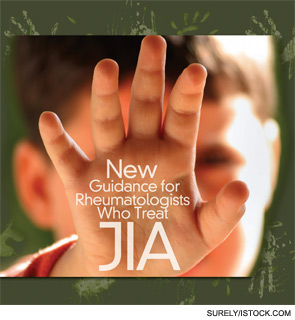
Recent advances in the treatment of juvenile idiopathic arthritis (JIA) have dramatically improved outcomes for children with these conditions. To provide an evidence base for treatment for JIA, an analysis of these advances has been presented in the recently published “2011 ACR recommendations for the treatment of juvenile arthritis.” These recommendations represent the development, for the first time, of validated guidance regarding the safest and most effective treatment of this chronic childhood disease.1 The recommendations are based on a systematic review of the literature and a formal group assessment process conducted by a core expert panel and task force panel composed of pediatric rheumatology clinicians and researchers from the United States, Canada, and Europe.
“Treatment of JIA has undergone major changes, first with the widespread use of methotrexate and then with the introduction of biologic agents,” says Timothy Beukelman, MD, MSCE, principal investigator and co-author of the recommendations. “The ACR recommendations are the first major attempt to provide detailed evidence and consensus-based guidance regarding the initiation and monitoring of therapeutic agents in the treatment of JIA.”
Therapeutic agents included in the recommendations are nonsteroidal antiinflammatory drugs (NSAIDs), intraarticular glucocorticoid injections, nonbiologic disease modifying antirheumatic drugs (DMARDs), biologic DMARDs, and systemic glucocorticoids for treatment of systemic features of systemic arthritis.
Economic analyses and cost implications of specific therapies are not part of the recommendations, and the recommendations are not intended to be used to determine insurance coverage policies or to limit healthcare coverage, says Dr. Beukelman, assistant professor of pediatrics in the Division of Pediatric Rheumatology at the University of Alabama at Birmingham. “My personal hope is that the recommendations will result in increased access to appropriate treatment for children with arthritis,” he notes.
Because of the broad international input, the recommendations are expected to inform and benefit physicians throughout the world and to be a “useful guide to clinicians at all levels of experience with the treatment of JIA,” Dr. Beukelman says. Even though some of the recommendations do not represent current regulatory agency–approved labeling, they do reflect “common and widely accepted practices in the field.”
Treatment Groups
Five treatment groups are identified in the 2011 ACR recommendations, which differs from the most recent ILAR (International League of Associations for Rheumatology) classification criteria that names six categories. The five treatment groups are:
- Patients with a history of arthritis of four or fewer joints throughout the history of their disease course. This group can include patients with persistent oligoarthritis, psoriatic arthritis, enthesitis-related arthritis, and undifferentiated arthritis.
- Patients with a history of arthritis of five or more joints throughout the history of their disease, which can include those with extended oligoarthritis, rheumatoid factor (RF-)– negative polyarthritis, RF-positive polyarthritis, enthesitis-related arthritis, and undifferentiated arthritis.
- Patients with active sacroiliac arthritis, which includes children with clinical and imaging evidence of active sacroiliac arthritis. This group likely will include patients with enthesitis-related arthritis and psoriatic arthritis, as well as patients from any of the ILAR JIA categories.
- Patients with systemic arthritis with active systemic features (and without active arthritis). An example would be a child whose arthritis resolved spontaneously or rapidly upon initiation of NSAIDs therapy but who had persistent fever.
- Patients with systemic arthritis with active arthritis (and without active systemic features). An example would be a child whose systemic features resolved spontaneously or rapidly upon initiation of NSAIDs therapy but whose arthritis remained active.
Each treatment group has its own features of poor prognosis, and the presence of one of these features qualifies the patient as having a poor prognosis. Subsequent treatment recommendations are given, which are based on whether the patient has a low, moderate, or high disease activity level.
Online Resource
Download these and other treatment recommendations, as well as practice guidelines, online at www.rheumatology.org via the Practice Management menu.

